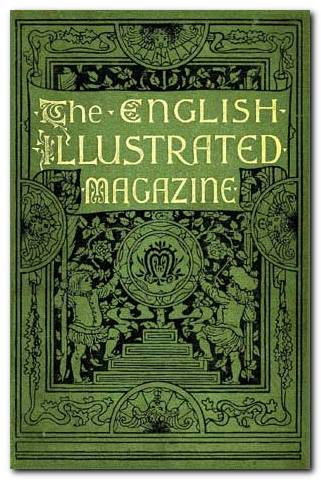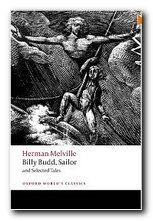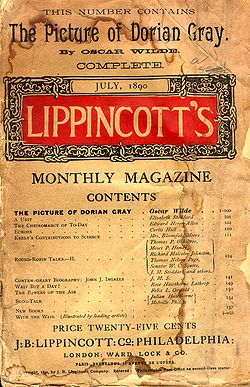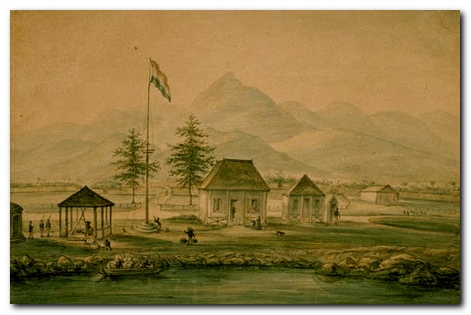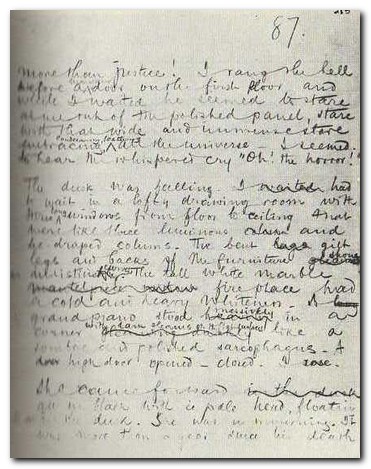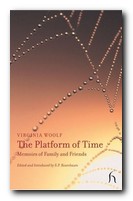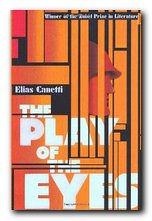tutorial, commentary, study resources, and web links
The Partner was written in 1911 and first published by J.M.Dent & Sons in the collection Within the Tides (1915). The other stories in this volume were The Planter of Malata, The Inn of the Two Witches, and Because of the Dollars.
The Partner – critical commentary
The narrative
It is worth stressing that the tale has two narrators – an un-named outer narrator who is a writer of some kind, and the inner narrator who at the start of the tale mentions going to London on business, but at the end is referred to as a ‘stevedore’.
The principal conceit of the tale is that during their ‘conversation’ the inner narrator is delivering the events of the narrative as the raw materials for a story he suggests the outer narrator can convert into a written account. The inner narrator also stresses that it is is a true story, rather than something that has been invented. Conrad (writing tongue in cheek as it were) has his outer narrator observe: “It’s said that truth is stranger than fiction.”
But an even greater irony of fictional construction is that the inner-narrator’s monologue is exactly what constitutes the story entitled The Partner. At the end of the tale the outer narrator claims that the incident was unsuitable for turning into fiction:
The story to be acceptable should have been transposed to somewhere in the South Seas. But it would have been too much trouble to cook it for the consumption of magazine readers. So here it is raw, so to speak — just as it was told to me — but unfortunately robbed of the striking effect of the narrator;
This is rather typical of Conrad’s dry and lofty sense of humour – almost at his own expense – because in fact he successfully creates an impassioned narrator who delivers his tale in an authentically oral manner, with a great deal of the characteristics of casual saloon bar conversation, including a fractured chronology of events; a narrative almost indistinguishable from interpolated comment and reported speech; delivered in incomplete sentences; and with frequent use of the vivid present tense:
George had no children. Married a couple of years; looked forward to a kid or two very much. Feels more upset than ever. Talks about an honest man for a father and so on. Cloete grins: You be quick before they come, and they’ll have a rich man for a father, and no one the worse for it. That’s the beauty of the thing.
Narrative logic
The Partner is one of a number of Conrad’s tales (and novels) in which one character relates to another a series of events which involve a third character. One thinks of the sequence of information links in a novel such as Lord Jim for instance, where an un-named outer narrator relays a story told to him by the inner narrator Marlow, concerning events in the life of the eponymous Jim – some of which come from yet another source (Gentleman Brown). This is an extremely complex and often risky strategy which sometimes leads Conrad to the outer reaches of credibility and beyond – for instance in the case of Chance and Nostromo.
Fortunately in The Partner the logic of the information sources is kept just within the boundary of credibility. The outer narrator presents us with the extended monologue of the inner narrator, who knows the principal characters in the story. His main source of information is Cloete, who is present at almost all the events of the drama, and who has relayed the story to the inner narrator prior to his return to America.
The only crucial scene at which Cloete is not present is Stafford’s moral panic when he is locked in the captain’s cabin on the sinking Sagamore. This sequence of events (which Conrad presents as the climax of the tale) is revealed in Stafford’s dying confession to a dockyard priest – who in his turn relates it to the inner narrator (presumably violating any vows of confidentiality by doing so).
The Partner – study resources
![]() The Partner – CreateSpace edn – Amazon UK
The Partner – CreateSpace edn – Amazon UK
![]() The Partner – CreateSpace edn – Amazon US
The Partner – CreateSpace edn – Amazon US
![]() The Complete Works of Joseph Conrad – Kindle eBook
The Complete Works of Joseph Conrad – Kindle eBook
![]() The Partner – eBooks at Project Gutenberg
The Partner – eBooks at Project Gutenberg
![]() The Cambridge Companion to Joseph Conrad – Amazon UK
The Cambridge Companion to Joseph Conrad – Amazon UK
![]() Routledge Guide to Joseph Conrad – Amazon UK
Routledge Guide to Joseph Conrad – Amazon UK
![]() Oxford Reader’s Companion to Conrad – Amazon UK
Oxford Reader’s Companion to Conrad – Amazon UK
![]() Joseph Conrad: A Biography – Amazon UK
Joseph Conrad: A Biography – Amazon UK
![]() Notes on Life and Letters – Amazon UK
Notes on Life and Letters – Amazon UK
![]() Joseph Conrad – biographical notes
Joseph Conrad – biographical notes
The Partner – plot summary
An un-named narrator (‘a writer of stories’) is engaged in conversation with a somewhat desperate man of in the smoking room of a hotel at Westport on the English Channel. The writer sees the coastline and rocks outside in a romantic, painterly manner – but the man insists that the truth is quite otherwise. He then recounts in a fragmentary and telegraphic manner a tale which culminates with a shipwreck on the same rocks.
Two brothers, George and Harry Dunbar, are in a business partnership. They have bought the sailing ship Sagamore from its previous owners. Harry Dunbar is captain of the ship and George runs an import and export office in London . When a persuasive salesman called Cloete arrives from America with a few hundred pounds to invest, they make him a partner.
George has a young wife with expensive tastes. When his part of the business hits a period of recession, Cloete tries to persuade him to invest in a patent medicine venture. He first suggests selling the Sagamore, and then proposes deliberately wrecking it to claim the insurance money. George is indignant at this suggestion, but Cloete is persistent, and plays on George’s weakness.
Cloete has meanwhile located Stafford, a disgraced down-and-out seaman, who he persuades to take on the task of wrecking the ship in exchange for five hundred pounds. George claims that Harry will be going back to sea on the next voyage, and Cloete arranges for Stafford to join the ship as chief mate. On doing so, Stafford immediately tampers with the anchor cables.
Ten days later there are reports that the Sagamore has run aground on the rocks in a storm just outside Westport where the story began. Lifeboats have taken some people ashore, but captain Harry is still on board. Cloete thinks his scheme of wrecking the ship has been achieved providentially. He joins Harry and his skeleton crew on board the stricken ship, where the captain asks his ‘partner’ to recover a bag of golden sovereigns and some important papers from his cabin.
When Cloete goes below he is joined by Stafford, who now demands a thousand pounds for his work, otherwise he will disclose the plan of deliberate sabotage to the ship’s insurers. In response, Cloete knocks him down and locks him in the cabin of the sinking ship.
Returning empty-handed, Cloete gets into the lifeboat, so captain Harry goes to retrieve the papers and money himself. Amidst the confusion and the storm, Stafford suddenly appears alongside Cloete in the lifeboat. The coxswain of the lifeboat, sensing that something is wrong, goes back on board with Cloete to look for the captain. They find him dead from a gunshot wound in his cabin, surrounded by the ship’s papers which have been set alight.
When they return to shore Cloete billets Stafford in a nearby hotel and breaks the news to George Dunbar and Harry’s wife. George thinks they can now invest money in the patent medicine scheme, and Harry’s wife goes mad with grief. When Cloete goes back to the hotel, Stafford demands even more money and threatens to report Cloete for attempted murder. He relates how he shot captain Harry, thinking it was Cloete. But in response Cloete counter-threatens him, saying he will report him for murder during a robbery on board.
In the aftermath of the affair, there is not enough money to buy into Cloete’s patent medicine scheme, so other investors are found – and they make a fortune out of ‘Parker’s Lively Lumbago Pills’. Cloete is disillusioned and returns to America, and Stafford dies in an East End hospital.
Joseph Conrad – video biography
The Partner – principal characters
| I | the un-named outer narrator |
| — | the un-named inner narrator |
| George Dunbar | import-export businessman |
| Harry Dunbar | his brother, captain of the Sagamore |
| Mr Stafford | a disgraced ex-mariner |
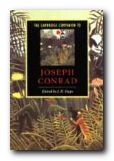 The Cambridge Companion to Joseph Conrad offers a series of essays by leading Conrad scholars aimed at both students and the general reader. There’s a chronology and overview of Conrad’s life, then chapters that explore significant issues in his major writings, and deal in depth with individual works. These are followed by discussions of the special nature of Conrad’s narrative techniques, his complex relationships with late-Victorian imperialism and with literary Modernism, and his influence on other writers and artists. Each essay provides guidance to further reading, and a concluding chapter surveys the body of Conrad criticism.
The Cambridge Companion to Joseph Conrad offers a series of essays by leading Conrad scholars aimed at both students and the general reader. There’s a chronology and overview of Conrad’s life, then chapters that explore significant issues in his major writings, and deal in depth with individual works. These are followed by discussions of the special nature of Conrad’s narrative techniques, his complex relationships with late-Victorian imperialism and with literary Modernism, and his influence on other writers and artists. Each essay provides guidance to further reading, and a concluding chapter surveys the body of Conrad criticism.
![]() Buy the book at Amazon UK
Buy the book at Amazon UK
![]() Buy the book at Amazon US
Buy the book at Amazon US
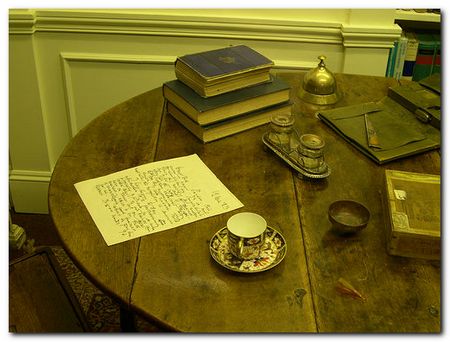
Joseph Conrad’s writing table
Further reading
![]() Amar Acheraiou Joseph Conrad and the Reader, London: Macmillan, 2009.
Amar Acheraiou Joseph Conrad and the Reader, London: Macmillan, 2009.
![]() Jacques Berthoud, Joseph Conrad: The Major Phase, Cambridge: Cambridge University Press, 1978.
Jacques Berthoud, Joseph Conrad: The Major Phase, Cambridge: Cambridge University Press, 1978.
![]() Muriel Bradbrook, Joseph Conrad: Poland’s English Genius, Cambridge: Cambridge University Press, 1941
Muriel Bradbrook, Joseph Conrad: Poland’s English Genius, Cambridge: Cambridge University Press, 1941
![]() Harold Bloom (ed), Joseph Conrad (Bloom’s Modern Critical Views, New York: Chelsea House Publishers, 2010
Harold Bloom (ed), Joseph Conrad (Bloom’s Modern Critical Views, New York: Chelsea House Publishers, 2010
![]() Hillel M. Daleski , Joseph Conrad: The Way of Dispossession, London: Faber, 1977
Hillel M. Daleski , Joseph Conrad: The Way of Dispossession, London: Faber, 1977
![]() Daphna Erdinast-Vulcan, Joseph Conrad and the Modern Temper, Oxford: Oxford University Press, 1991.
Daphna Erdinast-Vulcan, Joseph Conrad and the Modern Temper, Oxford: Oxford University Press, 1991.
![]() Aaron Fogel, Coercion to Speak: Conrad’s Poetics of Dialogue, Cambridge, Mass: Harvard University Press, 1985
Aaron Fogel, Coercion to Speak: Conrad’s Poetics of Dialogue, Cambridge, Mass: Harvard University Press, 1985
![]() John Dozier Gordon, Joseph Conrad: The Making of a Novelist, Cambridge, Mass: Harvard University Press, 1940
John Dozier Gordon, Joseph Conrad: The Making of a Novelist, Cambridge, Mass: Harvard University Press, 1940
![]() Albert J. Guerard, Conrad the Novelist, Cambridge, Mass: Harvard University Press, 1958
Albert J. Guerard, Conrad the Novelist, Cambridge, Mass: Harvard University Press, 1958
![]() Robert Hampson, Joseph Conrad: Betrayal and Identity, Basingstoke: Macmillan, 1992
Robert Hampson, Joseph Conrad: Betrayal and Identity, Basingstoke: Macmillan, 1992
![]() Jeremy Hawthorn, Joseph Conrad: Language and Fictional Self-Consciousness, London: Edward Arnold, 1979
Jeremy Hawthorn, Joseph Conrad: Language and Fictional Self-Consciousness, London: Edward Arnold, 1979
![]() Jeremy Hawthorn, Joseph Conrad: Narrative Technique and Ideological Commitment, London: Edward Arnold, 1990
Jeremy Hawthorn, Joseph Conrad: Narrative Technique and Ideological Commitment, London: Edward Arnold, 1990
![]() Jeremy Hawthorn, Sexuality and the Erotic in the Fiction of Joseph Conrad, London: Continuum, 2007.
Jeremy Hawthorn, Sexuality and the Erotic in the Fiction of Joseph Conrad, London: Continuum, 2007.
![]() Owen Knowles, The Oxford Reader’s Companion to Conrad, Oxford: Oxford University Press, 1990
Owen Knowles, The Oxford Reader’s Companion to Conrad, Oxford: Oxford University Press, 1990
![]() Jakob Lothe, Joseph Conrad: Voice, Sequence, History, Genre, Ohio State University Press, 2008
Jakob Lothe, Joseph Conrad: Voice, Sequence, History, Genre, Ohio State University Press, 2008
![]() Gustav Morf, The Polish Shades and Ghosts of Joseph Conrad, New York: Astra, 1976
Gustav Morf, The Polish Shades and Ghosts of Joseph Conrad, New York: Astra, 1976
![]() Ross Murfin, Conrad Revisited: Essays for the Eighties, Tuscaloosa, Ala: University of Alabama Press, 1985
Ross Murfin, Conrad Revisited: Essays for the Eighties, Tuscaloosa, Ala: University of Alabama Press, 1985
![]() Jeffery Myers, Joseph Conrad: A Biography, Cooper Square Publishers, 2001.
Jeffery Myers, Joseph Conrad: A Biography, Cooper Square Publishers, 2001.
![]() Zdzislaw Najder, Joseph Conrad: A Life, Camden House, 2007.
Zdzislaw Najder, Joseph Conrad: A Life, Camden House, 2007.
![]() George A. Panichas, Joseph Conrad: His Moral Vision, Mercer University Press, 2005.
George A. Panichas, Joseph Conrad: His Moral Vision, Mercer University Press, 2005.
![]() John G. Peters, The Cambridge Introduction to Joseph Conrad, Cambridge: Cambridge University Press, 2006.
John G. Peters, The Cambridge Introduction to Joseph Conrad, Cambridge: Cambridge University Press, 2006.
![]() James Phelan, Joseph Conrad: Voice, Sequence, History, Genre, Ohio State University Press, 2008.
James Phelan, Joseph Conrad: Voice, Sequence, History, Genre, Ohio State University Press, 2008.
![]() Edward Said, Joseph Conrad and the Fiction of Autobiography, Cambridge Mass: Harvard University Press, 1966
Edward Said, Joseph Conrad and the Fiction of Autobiography, Cambridge Mass: Harvard University Press, 1966
![]() Allan H. Simmons, Joseph Conrad: (Critical Issues), London: Macmillan, 2006.
Allan H. Simmons, Joseph Conrad: (Critical Issues), London: Macmillan, 2006.
![]() J.H. Stape, The Cambridge Companion to Joseph Conrad, Cambridge: Cambridge University Press, 1996
J.H. Stape, The Cambridge Companion to Joseph Conrad, Cambridge: Cambridge University Press, 1996
![]() John Stape, The Several Lives of Joseph Conrad, Arrow Books, 2008.
John Stape, The Several Lives of Joseph Conrad, Arrow Books, 2008.
![]() Peter Villiers, Joseph Conrad: Master Mariner, Seafarer Books, 2006.
Peter Villiers, Joseph Conrad: Master Mariner, Seafarer Books, 2006.
![]() Ian Watt, Conrad in the Nineteenth Century, London: Chatto and Windus, 1980
Ian Watt, Conrad in the Nineteenth Century, London: Chatto and Windus, 1980
![]() Cedric Watts, Joseph Conrad: (Writers and their Work), London: Northcote House, 1994.
Cedric Watts, Joseph Conrad: (Writers and their Work), London: Northcote House, 1994.
Other writing by Joseph Conrad
 Lord Jim (1900) is the earliest of Conrad’s big and serious novels, and it explores one of his favourite subjects – cowardice and moral redemption. Jim is a ship’s captain who in youthful ignorance commits the worst offence – abandoning his ship. He spends the remainder of his adult life in shameful obscurity in the South Seas, trying to re-build his confidence and his character. What makes the novel fascinating is not only the tragic but redemptive outcome, but the manner in which it is told. The narrator Marlowe recounts the events in a time scheme which shifts between past and present in an amazingly complex manner. This is one of the features which makes Conrad (born in the nineteenth century) considered one of the fathers of twentieth century modernism.
Lord Jim (1900) is the earliest of Conrad’s big and serious novels, and it explores one of his favourite subjects – cowardice and moral redemption. Jim is a ship’s captain who in youthful ignorance commits the worst offence – abandoning his ship. He spends the remainder of his adult life in shameful obscurity in the South Seas, trying to re-build his confidence and his character. What makes the novel fascinating is not only the tragic but redemptive outcome, but the manner in which it is told. The narrator Marlowe recounts the events in a time scheme which shifts between past and present in an amazingly complex manner. This is one of the features which makes Conrad (born in the nineteenth century) considered one of the fathers of twentieth century modernism.
![]() Buy the book from Amazon UK
Buy the book from Amazon UK
![]() Buy the book from Amazon US
Buy the book from Amazon US
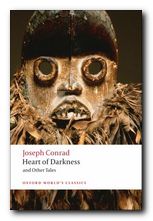 Heart of Darkness (1902) is a tightly controlled novella which has assumed classic status as an account of the process of Imperialism. It documents the search for a mysterious Kurtz, who has ‘gone too far’ in his exploitation of Africans in the ivory trade. The reader is plunged deeper and deeper into the ‘horrors’ of what happened when Europeans invaded the continent. This might well go down in literary history as Conrad’s finest and most insightful achievement, and it is based on his own experiences as a sea captain. This volume also contains ‘An Outpost of Progress’ – the magnificent study in shabby cowardice which prefigures ‘Heart of Darkness’.
Heart of Darkness (1902) is a tightly controlled novella which has assumed classic status as an account of the process of Imperialism. It documents the search for a mysterious Kurtz, who has ‘gone too far’ in his exploitation of Africans in the ivory trade. The reader is plunged deeper and deeper into the ‘horrors’ of what happened when Europeans invaded the continent. This might well go down in literary history as Conrad’s finest and most insightful achievement, and it is based on his own experiences as a sea captain. This volume also contains ‘An Outpost of Progress’ – the magnificent study in shabby cowardice which prefigures ‘Heart of Darkness’.
![]() Buy the book from Amazon UK
Buy the book from Amazon UK
![]() Buy the book from Amazon US
Buy the book from Amazon US
© Roy Johnson 2014
Joseph Conrad web links
Joseph Conrad at Mantex
Biography, tutorials, book reviews, study guides, videos, web links.
Joseph Conrad – his greatest novels and novellas
Brief notes introducing his major works in recommended editions.
Joseph Conrad at Project Gutenberg
A major collection of free eTexts in a variety of formats.
Joseph Conrad at Wikipedia
Biography, major works, literary career, style, politics, and further reading.
Joseph Conrad at the Internet Movie Database
Adaptations for the cinema and television – in various languages. Full details of directors and actors, production notes, box office, trivia, and quizzes.
Works by Joseph Conrad
Large online database of free HTML texts, digital scans, and eText versions of novels, stories, and occasional writings.
The Joseph Conrad Society (UK)
Conradian journal, reviews. and scholarly resources.
The Joseph Conrad Society of America
American-based – recent publications, journal, awards, conferences.
Hyper-Concordance of Conrad’s works
Locate a word or phrase – in the context of the novel or story.
More on Joseph Conrad
Twentieth century literature
Joseph Conrad complete tales
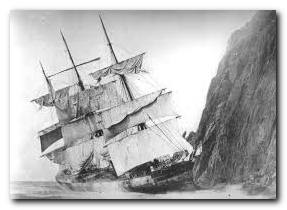
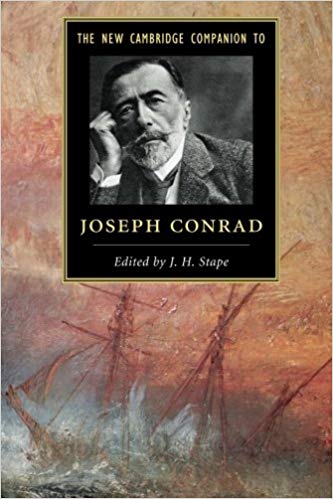
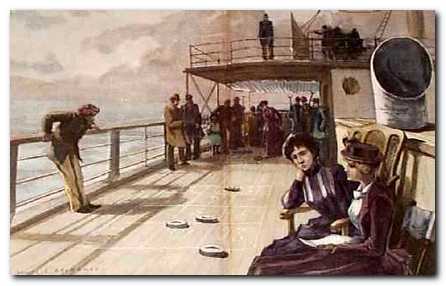

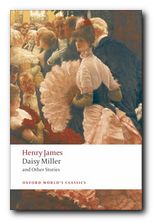 Part II. On board, Jasper is very attentive to Grace, so much so that passengers begin to gossip about them. Mrs Nettlepoint even suspects that Grace might have designs on her son. All available evidence suggests that some sort of romantic relationship is developing between the two of them. The narrator and Mrs Nettlepoint are alarmed at this development. She feels maternally protective towards her son, and the narrator thinks that Grace’s reputation is being compromised. They feel that they should warn and reprimand the two younger characters.
Part II. On board, Jasper is very attentive to Grace, so much so that passengers begin to gossip about them. Mrs Nettlepoint even suspects that Grace might have designs on her son. All available evidence suggests that some sort of romantic relationship is developing between the two of them. The narrator and Mrs Nettlepoint are alarmed at this development. She feels maternally protective towards her son, and the narrator thinks that Grace’s reputation is being compromised. They feel that they should warn and reprimand the two younger characters.

 Washington Square
Washington Square The Aspern Papers
The Aspern Papers The Spoils of Poynton
The Spoils of Poynton